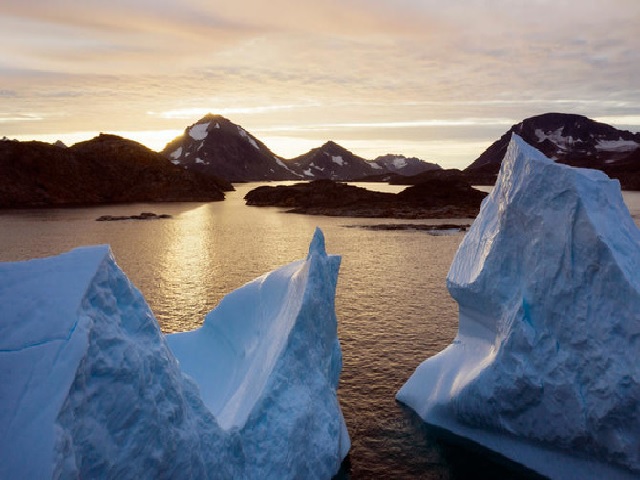
Those findings, published in 2016 in Nature Climate Change, were the springboard for the new study. They discovered that it spanned a transect 25 miles long and was having widespread effects on local hydrology. Realizing they had witnessed something significant, the researchers set about drilling more cores over a larger region to see how extensive the ice shell was. That summer, for the first time on record, meltwater from this part of Greenland visibly started to flow away as runoff. “And July was this record-breaking melt year, and we got our answer very quickly.”

MacFerrin and his colleagues immediately wondered whether that shell might be preventing meltwater from percolating into the firn. It was, MacFerrin says, as if a “turtle shell” had formed over the firn. They started finding dense, compacted layers of ice in core after core, just below the seasonal snow layer. MacFerrin and his colleagues got their first hint that the firn may be losing its absorbency in the spring of 2012, when they were drilling boreholes through the firn in southwest Greenland. When the top of this snow cone melts in the summer, liquid water percolates down into the firn, which soaks it up like a 100-foot-thick sponge. But in reality about 80 percent of the ice sheet’s surface is like a snowcone: A dusting of fresh snowfall covers a thick layer of old snow, called firn, that’s slowly being compressed into glacier ice but still contains plenty of air pockets. It’s easy to think of Greenland as a solid, impenetrable hunk of ice. The 35-minute calving was captured in this time-lapse video. “We're watching an ice sheet rapidly transform its state in front of our eyes, which is terrifying,” says lead study author Mike MacFerrin, a glaciologist at the University of Colorado, Boulder.Ī 4-mile-wide iceberg broke off the Helheim Glacier in Greenland in 2018, tumbling into the fjord below. Instead, the meltwater becomes runoff that flows overland, eventually making its way out to sea.Īs the ice slabs continue to spread, the study’s authors predict more and more of Greenland’s surface will become a “runoff zone,” boosting the ice sheet’s contribution to global sea level rise and, perhaps, causing unexpected changes.

From 2001 to 2014, the slabs expanded in area by about 25,000 square miles, forming an impermeable barrier the size of West Virginia that prevents meltwater from trickling down through the ice. “Ice slabs”-solid planks of ice that can span hundreds of square miles and grow to be 50 feet thick-are spreading across the porous, air pocket-filled surface of the Greenland ice sheet as it melts and refreezes more often. They’re causing the remaining ice to become denser. A study published Wednesday in Nature shows that mega-melts like that one, which are being amplified by climate change, aren’t just causing Greenland to shed billions of tons of ice. When the remnants of Europe’s second summertime heat wave migrated over Greenland in late July, more than half of the ice sheet’s surface started melting for the first time since 2012.


 0 kommentar(er)
0 kommentar(er)
